Wills Wing U2:160
Introduction
Prior to my purchase of the Wills Wing U2 160, I have amounted over 70 hours airtime; predominately on an AirBorne Sting 3:168 and prior to that, on an Aeros Target 16. This review uses the AirBorne Sting 3 as the primary benchmark for comparisons.
I purchased the Wills Wing U2 160 as new, supplied from Graham Phipps from Cloud9 Hang Gliding, Paragliding and Paramotoring. The US dollar and British pound exchange rate made this a favourable purchase, especially compared to AirBorne that has effectively become unaffordable in the UK due to the strength of the Australian dollar compared to the British pound (2014).
My main motivations for the purchase was for something more suitable for aerotowing, with more performance than the Sting 3 - but still fun to fly, and cost (sourcing spares from AirBorne is expensive and difficult due to there being no AirBorne distributor in the UK). The U2 was also highly recommended by many, but most notable; my former instructor John B. from South Downs Hang Gliding, Luke N. a prior owner and very prominent pilot in the UK and Graham Phipps (although Graham probably had a motive!). All had glowing reports about the U2! A close second was the Aeros Discus.
Rigging
The Wills Wing U2 comes with a very comprehensive manual; however, when I first collected the glider, Graham Phipps showed me how to rig the glider along with some valuable tips, especially with regards to the tip wands!). I also sought out some YouTube videos and there's a great one here: YouTube Video that demonstrates a good technique for the tip wand insertion and removal.
I had also opted for the Wills Wing wheel option as I winch (wheels are mandatory for winching). Other non-standard wheels can be purchased from other providers but I didn't want the hassle of selecting a hub to fit the aero foiled base bar. The Wills Wing wheels are fitted by screwing them to the aero foiled base bar where they look like a permanent fixture. In fact, once mounted on the base bar, there is no need to remove them again!
Flat Rigging
The U2 flat rigs (some gliders don't), which is particularly useful for windy hill-tops in the UK. There isn't much to say other than, it's pretty predictable.
On the Control Frame
When the glider is tensioned, the wing tips will hover just above the ground in nil wind and with a little VG added.
Short Packing
I always avoid short-packing but sometimes this is unavoidable and necessary, particularly if you need to take the glider on an aeroplane as I did in 2018 for my trip to Lanzarote! The Wills Wing manual is a great reference for Short Packing, (although some additional pictures would have been a good inclusion). It's pretty straight forward, but with some additional steps that I haven't used on previously owned gliders. The first thing to do is remove the clevis pin that secures the sail to the outer leading edge. Once complete and with the outer sprogs folded inward, the outer leading edge can simply be disengaged from the inner leading edge by gently pulling out from the sail. On my glider, there wasn't a jam nut on the sprog, so to preserve the sprog setting; I taped the sprog alongside the outer leading edge (see pictures below).
As the inner sprog normally folds towards the outer leading edge, it is necessary to remove this as folding it inward for short packing, would interfere with the cross-bar assemblies. Again there was no jam-nut on this sprog, so after removing the screw and nut and then the sprog, I used insulation tape to preserve the sprog setting.
The final stage before padding and folding everything up for short-packing; is the removal of the inboard transverse batten. I fully removed this and stowed with the tip wands.
Ground Handling
The side-wires are slack until there's enough airflow over the wings for them to lift and tension the side-wires. I believe this is quite common for gliders with a VG system. Moving the glider around on a windy hill top, I found the U2 160 to be a bit more of a handful than the Sting 3; I don't know why; it just feels that way and I was a little surprised as the U2 160 has a small sail area.
Launching
Hill
A solid launch technique is required - don't be tempted to mush it into the air as I'm sure it will punish you harshly for it - don't consider a U2 until you're 100% confident your launch is sound! You need to keep the wings level while accelerating the glider to a good airspeed. It's easy to pull the bar in to continue the acceleration before lifting off the ground. The glider feels very comfortable and well balanced during this phase.
Transitioning from the uprights to the base-bar, the glider remained completely predictable and controllable (perhaps my technique has improved over the years).
Launching in a slight moderate cross wind the glider was a little awkward on the initial acceleration, but when accelerated settled down quite nicely (note - a good solid controlled acceleration is required).
Static Winch
I've not yet winched the U2 160; please check back soon!
Aerotow
[18Jun2017] I've finally managed a couple of Aerotow's on the U2. Initial findings are promising, although I did experience some yaw oscillations. First tow was with one third VG and the second with two thirds. I found the tendency for me to initiate yaw oscillations were reduced with higher VG settings. I am going to reserve judgement until I've a few more under my belt and am a little more current - also note, despite recommendations from Wills Wing, I did not aerotow with a vertical stabiliser fitted.
In Flight and Handling
The glider handles very well in flight. I'm towards the top end of the weight range for this glider which probably improves the handling. On my very first flight the glider pretty much felt part of me and went wherever I wanted it to without any conscious thought towards the control inputs. I found this very reassuring considering this glider was a step up on the performance scale for me. Some gliders need a little bit of speed to be pulled on before initiating a turn, but the U2 doesn't although a little makes things happen quicker! Once the glider is rolled, pushing the bar out tightens the turn and the glider carves through the air beautifully. There's no need to high side and in thermals the glider was a joy to fly.
Compared to the Sting 3:168, there appeared to be less wing above my head which initially I found a little disconcerting but when thermalling with a paraglider slightly above me, I found this gave me extra visibility and confidence.
The VG is harder to pull on than on the Sting but there is significantly more travel on the VG which has a big difference on the sail. At full VG the glider starts to feel stiffer but still controllable. I haven't backed this up with any data, but with full VG there is certainly an improvement in glide and penetration. In this configuration I was able to scratch along a northerly facing ridge (the Truleigh Run) with a significant westerly component in it where other gliders were not able to.
Landing
I've now executed a number of successful windy top and nil wind bottom landings on the U2 and on all occasions the glider was perfectly predictable. Since my incident on the Sting 3 at the Devil's Dyke on the 23 March 2014, I've adopted a safer technique of getting onto the uprights well before landing. In this position, with some gliders it's difficult to pull back on the uprights to keep a good airspeed, particularly as you descend through a wind gradient. I had no difficulties on the U2 160. For windy top landings, I simply fly the glider to the ground - in my opinion, these are the easiest landings. For nil wind bottom landings, I like to use a hard flare. My two nil wind landings to date have both required a full flare and both have resulted with a no stepper landing. The flare window is pretty obvious and on my second nil wind landing, I left the flare a little late but the glider responded very well resulting in a good landing.
I will comment again on landings when I have more under my belt, but overall, I was surprised how easy the U2 lands (note VG was fully off for all my landings!).
Gripes
Tip Wands
I had to mention tips wands, purely because I've had issues with them and so have others! My main issue with the tips wands are the removal of them. When you get it right, it's easy! However, get it wrong and you're in for some pain! The worst thing that can happen is getting the wand caught the wrong side of the securing lever. This normally requires mechanical intervention in the form of a screwdriver and spanner to remedy! That said, after more than 10 rigs and de-rigs of the U2, I think I've now got the tip-wands sorted (see the video link above as this helped loads!).
Conclusion
It's still early days, but I have to say, I love the U2 160. Just looking at it rigged with its curved tips and aero-foiled control frame, it looks like it wants to slice through the air with stealth like efficiency. In flight, it's predictable and tracks in a straight line at high speeds. Previously, when I upgraded from the Aeros Target to the AirBorne Sting 3, I was very anxious but it turned out to be a non-event. The same has to be said going to the Wills Wing U2 from the AirBorne Sting. In fact, the two gliders are pretty similar in how they feel when flying, although I think the U2 has better high speed performance.
The U2 is certainly lighter in handling; possibly due to me being closer to the top end weight limit? The VG is also significantly more effective on the U2 and when fully on, you can really feel the glider tighten up and become stiffer in role response. Of course, you are rewarded with better glide and top end speed performance!
Overall, I'm very impressed with the U2. How much of an upgrade compared to the Sting 3 is still something I'm working out; it is noticeable but by how much is the question! I'll add more when I've flown in more varied situations!
Videos
Here's a collection of videos of my fights on the Wills Wing U2 160.
Update History:



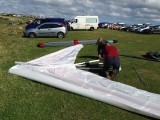
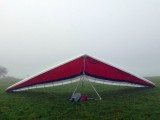

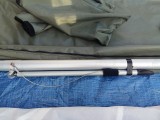
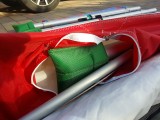
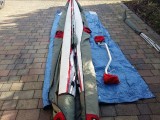
LandingsChapter2.jpg)
AShortTripOverTheBack.jpg)
ToTheCloudsAndBeyond.jpg)
DevilsDyke.jpg)